“One of the biggest things you learn out in the real world that school can’t really prepare you for is how to work with different types of people.”
Javlin Baloca is a CSUF alumnus of the Cinema and Television Arts major. Since graduating, he’s spent time as a freelance video editor while also working as a video producer in the corporate world.
Kemdi:
Where did your interest in filmmaking and content creation begin?
Javlin:
It all started with theatre.
As a kid, I had a lot of energy. I was bouncing off the walls, always getting in trouble at school for mouthing off and being too active. So my mom decided to put me in theater in 3rd grade. That’s kind of where the creative journey began—being on stage, acting, doing musicals—all that stuff.
I kept it going into high school, and we had these regional competitions where schools would compete against each other. In my senior year, I found out there was a category for short films. I thought, “I like being on stage, let’s see what it’s like behind the camera.” We tried it out, made finalists for Regionals, then State, which meant we got to go to Nebraska to compete nationally.
I ended up placing second at the International Thespian Festival in 2014. From there, I thought, “Okay, I want to pursue film. Let’s see what happens. Make the most of it.”
Plus I love movies. I’d always thought it would be cool to see people who look like me in the media—films, TV shows, stuff like that. Growing up, there weren’t a lot of Asian people represented, at least not like there are now.
That drive led me to Cal State Fullerton, where I pursued a film degree. Back then, it was called RTVF, but I think halfway through, they changed it to CTVA—Cinema and Television Arts.
I joined Titan Comm in my sophomore year through a recommendation from my friend CassidyJo. I started as a PA, helping out with OC News, TechOn, and one of my favorite shows—Titan Radio Live. I eventually became the chief television editor and helped master all the content before it was published on broadcast and YouTube. Cass is now in charge of that team – we lived in the same Freshman dorms, worked together at TitanTV, and graduated in 2018. Seeing her make her way back is so cool.
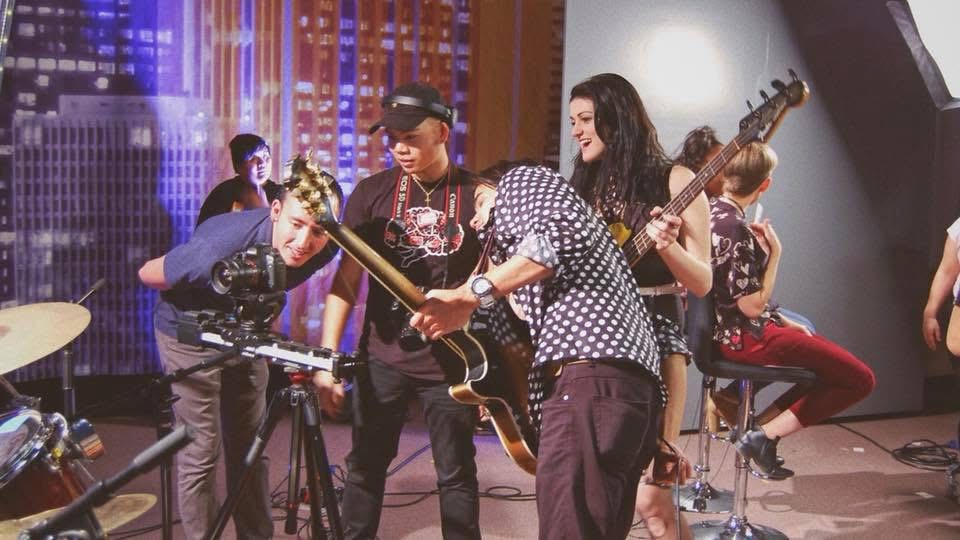
So yeah, that’s how the journey began—and how I found my way into Titan Comm too.
Kemdi:
It’s cool that you mentioned theater, too. I did the whole troublemaker-to-theater-kid route for a little bit myself.
And yeah, the International Thespian Festival—it was a lot of fun. I was also going to ask, because I remember seeing this on your interest form: you mentioned acting in a couple of short films that went to the Newport Beach Film Festival. Do you still do on-camera stuff, or is it mostly behind the camera now?
Javlin:
Most of it is behind the camera now. Back at CSUF, there was an advanced short film class you could take in your Junior/Senior year. You get granted a budget, and everyone sorts themselves into different roles—like scriptwriter, director, editor, camera, sound, PA—all the usual departments.
My senior year, I worked as an editor for a short called Consequences. But in my junior year, I auditioned for one of the short films that the senior class was producing called Mind Over Muse, and in my senior year, I acted in Vultures. I’m not sure they’re Oscar-worthy, but it was such a fun experience being in front of the camera for those projects.
I also did a few local commercials back in Las Vegas—super small, nothing fancy, lost to the internet somewhere. But yeah, these days I’m more behind the camera, or mainly working as an editor.
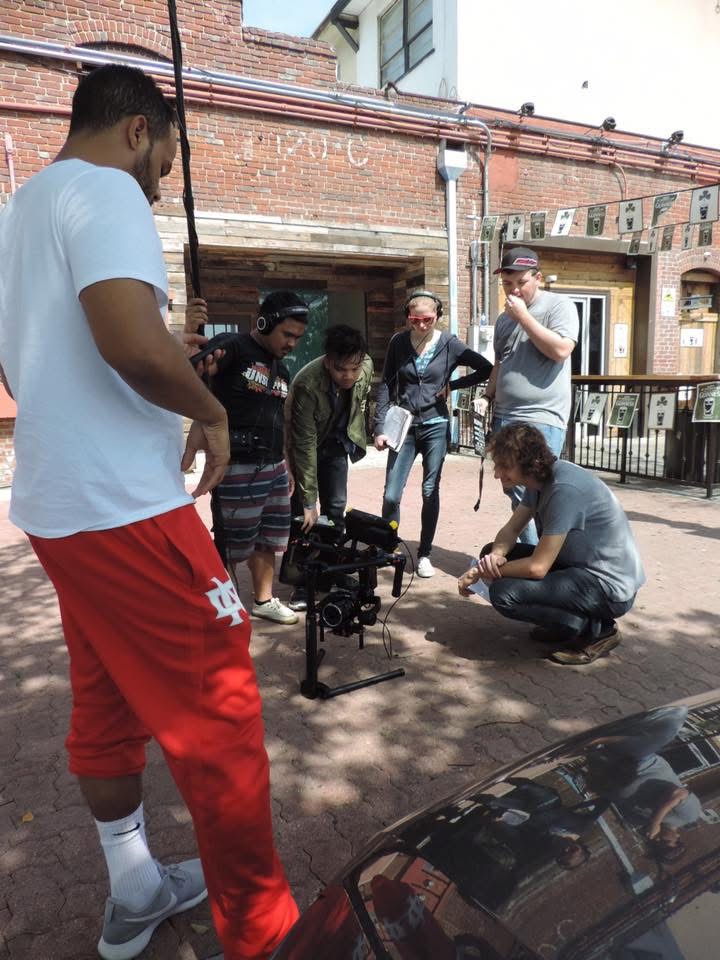
And I guess you could say I’m a content creator, too. After graduating from Fullerton in 2018, I started working at an Apple Store just to pay the bills. But I also found a small community of independent filmmakers. We started working on a lot of music videos—really small stuff at first, like $500 videos for local artists.
By the time I moved to the Bay in 2022, we were doing music videos that cost over $10kfor bigger artists like Linkin Park and working with labels like Warner and Atlantic Records. We even did some corporate projects for companies like Panda Express. So it’s been cool to see that growth and how far we’ve come.
Kemdi:
And in terms of music videos—how did those first couple come about? Was it through that creative group you mentioned? And also, were you more of a jack-of-all-trades on those videos, or were you mainly focused on editing?
Javlin:
Yeah, I was kind of the Swiss Army knife of the team. There were only about four of us. The group was called POPeye Media—they’re still active. The main director/producer duo, Jeff & Kelsey, have moved out to Taiwan now, so they’re continuing to take on projects from over there.
When I joined, POPeye Media was more of a music journalism site. They reviewed indie music and posted blog content. But I noticed some musician friends reaching out to them asking for music videos, so I realized there was a creative side to what they were doing, too.
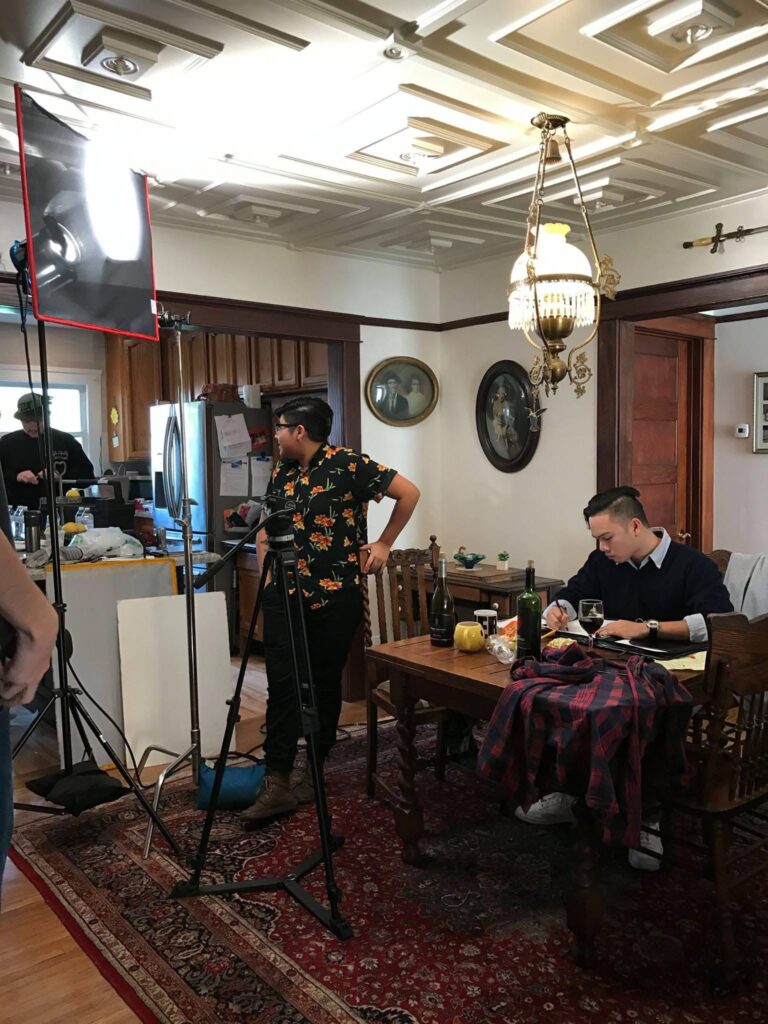
I reached out and was like, “Hey, I see you guys are creating stuff—can I hop on, learn, help out, be part of it somehow?” And they were super welcoming. I ended up joining the team, became great friends, and kept working together for almost three years before I moved.
Kemdi:
You mentioned earlier that you didn’t see a lot of people in the media who looked like you. I was wondering—were there any people you looked up to while you were on that journey? Maybe YouTubers, people in traditional media, or even folks on Instagram? Was it kind of a mix?
Javlin:
Yeah, it was a mix of both. Growing up, I watched a lot of Jackie Chan movies with my grandpa—we loved those. Anytime one came on, we’d just sit and watch together. That was kind of our main form of entertainment—movie nights. Watching so many as a kid made me want to make things like it – funny, engaging, and seen by lots of people.
Then in high school and college, I started following a lot of Asian creators on YouTube. I was really into Wong Fu Productions—they make short, lovey-dovey rom-com-type stuff. I also followed a lot of Asian R&B singers, rappers, comedians—people like Tim Chantarangsu, D-Trix, Ryan Higa, AJ Rafael.
I also looked up to musicians like August Rigo, a producer from Toronto, and my biggest inspiration as an artist is RUSSELL!, formerly known as D-Pryde. A lot of them were Filipino—just people I could see myself in, since I’m also Filipino/Chinese. Seeing them doing their thing made me think, “Hey, maybe I can get there too and make something of myself”. With POPeye being based in the 626, a lot of our clientele were part of the Asian community, and these music/video/business projects did hit different, knowing we’re pushing the culture & community forward a small step at a time.
Kemdi:
What’s it like producing a music video compared to the type of content you normally like to create?
Javlin:
I’d say it feels a lot more high-stakes when you’re doing stuff for other people. Like, when I was in college and even afterward, I’d make my music and just shoot videos by myself or with 1-2 friends. Super low stakes—no real budget, just run & gunning it anywhere, making projects for fun.
But when you’re working with artists who are paying you to bring their vision to life, your mindset shifts. There’s usually a budget involved, and now you’re thinking about things like renting video sets, buying props, handling crafty, managing a team—it’s a whole production. That’s when a lot of the experience I picked up in film classes came into play.
All those production classes helped, and it was cool to see it come full circle—applying what I learned in school to the music videos I was making with POPeye. Honestly, a big part of it was also just “YouTube University”—looking up tutorials like, “How do I pull off this effect?” or “How do I light a scene on a budget?”
So yeah, it’s been a mix of practice, YouTube, and learning from friends who’ve done it too. When you find your community, you can start picking up from each other’s experiences, and that really helps shape your own path.
Kemdi:
In terms of what you learned from film school, what’s one thing you realized pretty quickly once you got some real-world experience that you can’t learn in a classroom?
Javlin:
That’s a good one. I think one of the biggest things you learn out in the real world that school can’t prepare you for is how to work with different types of people.
In film school, everyone’s more or less on the same page—we’re all students, we’re all juggling other classes, and we’re seeing each other regularly. A lot of us became familiar with each other, and we’d spend weekends grinding on projects together. But in the real world? It’s different.
You might be bringing in outside talent or working with people you’ve never met before. You have to learn how to cast properly, how to vet people—make sure they’re reliable, trustworthy, and a good fit for your team. And you also need to know what you’re looking for in collaborators, like if you’re hiring a director, a producer, or a videographer, especially through platforms like ShareGrid or referrals.
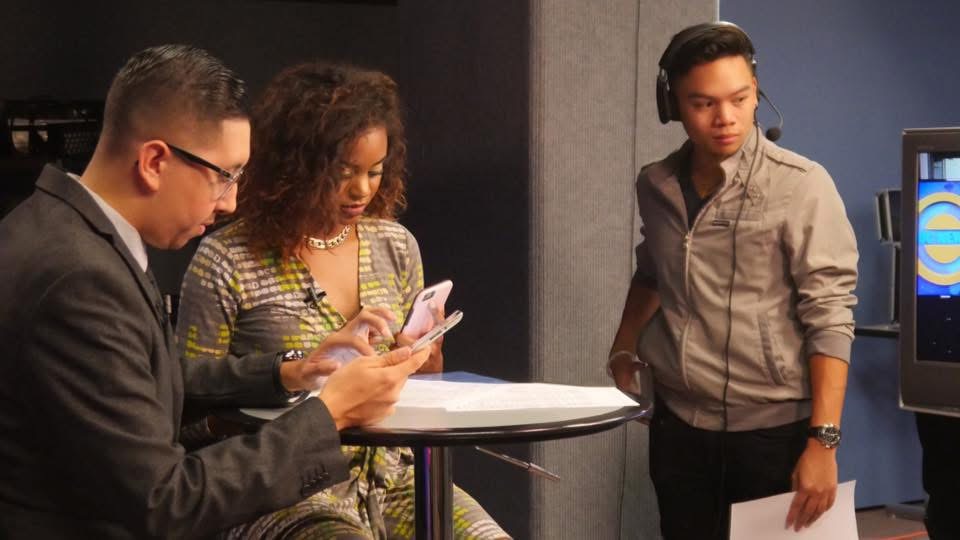
With POPeye, for example, we hold weekly team meetings where we go over the agenda, talk about what artists or businesses have reached out to us, and figure out what kind of work they’re looking for. From there, we plan shoot dates, set budgets—all the logistical stuff that only really clicks once you’re doing it.
Film school gave me a taste of that side of things, but there’s no substitute for just getting out there and doing it. Even if it’s just you and a couple of friends, those smaller experiences build the foundation for handling bigger productions.
Kemdi:
And then—you kind of brushed over this with my first question—but I just want to know: what was your overall experience like at Cal State Fullerton? Not just in terms of film, but also socially, work-life balance-wise, and maybe even your favorite professors?
Javlin:
Yeah, I mean, I didn’t keep in touch with too many professors afterwards. But for example, Jeff Whitten and Nathan Jeffers were huge influences. I never actually had a class with them, but they were two of my biggest sources of education when it came to lighting, shooting, and working on set.
Work-life balance was fine. I never had a problem with it. Honestly, I looked forward to spending time in the basement studio—the editing deck had three screens, which I didn’t have back in my little apartment. So it was nice being able to come in, work, and know we were going to make something cool. Whether it was a local band we were shooting for TRL! or doing OC News, where I’d be on jib, graphics, or the TD behind the switchboard. It was always an exciting time, just creating and collaborating with a great team.
Socially, I was part of a co-ed fraternity called Alpha Phi Omega—it’s nonprofit and focused on community service. We did a lot of fundraisers for important causes, and I made a lot of friends through that organization. I still keep in touch with some of them.
Most of them weren’t film majors—actually, a lot were into kinesiology or health sciences. But I had a few film friends too, like CassidyJo. Plus, during freshman year, I dormed with other film majors, and the people I got close to then stayed part of my circle the whole way through. So yeah, social life was great—it was fun to have friends along for the ride.
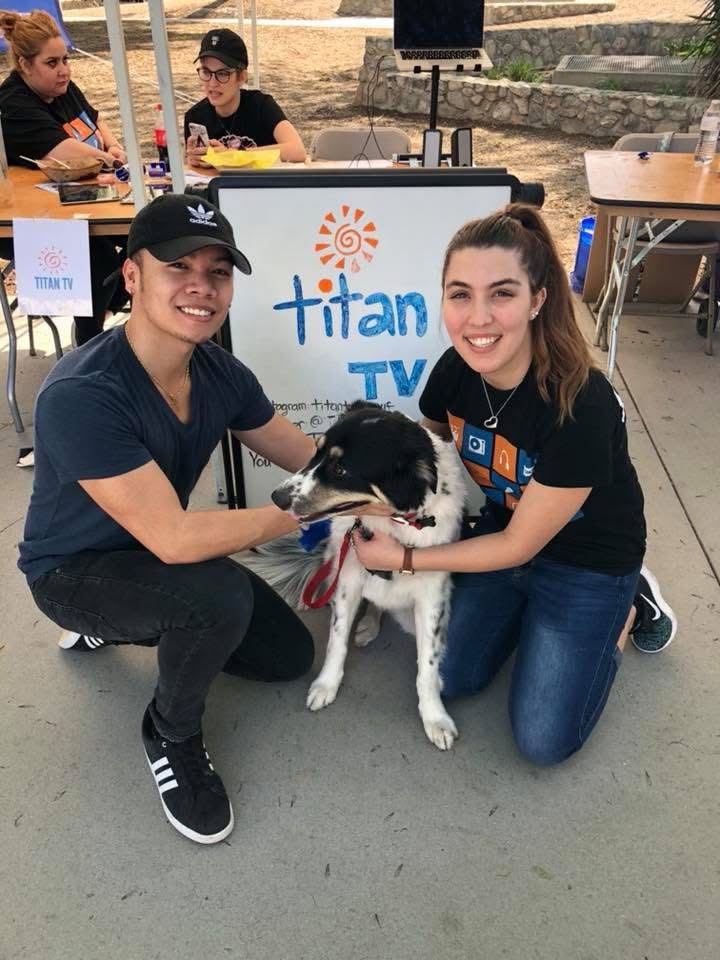
Kemdi:
So I know you mentioned Apple, of course. You worked retail for them for a few years after graduation, and then you got a full-time gig with them. Was that a position you applied for before moving to the Bay, or were you already planning to move up there and then happened to land that role?
Javlin:
In retail, they have a program called a “Career Experience”. It’s an internal internship you can apply for. It’s super selective & competitive—you can only apply twice a year. And during the three years I was at the store, I applied every chance I could.
I finally got an offer for one at the end of 2022 as a video editor. A lot of people work a few months at corporate or remote, and then go back to retail, but I took a risk—I moved everything up north to the Bay Area just for that internship because I wanted to stay and work at corporate. My thinking was that if I lived up there and applied, rather than trying to apply from SoCal, I thought I’d have a better chance.
Even though it’s incredibly rare to land a full-time job afterward, I decided to bet on myself. I had a great time up there with mentors & coworkers, working with the Culture team and doing video editing. Afterward, I just got really lucky—made the right connections and showcased the right work, an opportunity opened up through a contractor, I applied, and they liked me enough to offer me a full-time role.
And I’m still here—three years later. Everything kind of came full circle. I took a big risk and it ended up working out.
Kemdi:
Yeah, I was gonna ask about that—what was it like moving from SoCal to NorCal? Like, leaving everything behind?
Javlin:
I’m actually from Vegas. I grew up in Vegas, then went to school at Fullerton, and after that, I lived around the 626 area while I worked at the Glendale Americana store from 2018 to 2022.
So yeah, it was my first time living in the Bay. It was a scary move. During the internship, they do provide housing, but there was no guarantee I’d stay after. I wasn’t sure what would happen once the 4-month internship ended.
I even applied to other retail stores up here—just as a backup—but didn’t get any offers.
Still, I took the risk because I wanted to experience what it was like working at a corporation.
It was kind of sad leaving everything behind.
At the time, POPeye had just locked in a pretty big film gig, and it was tough to walk away from that. All the friends I made in college and afterwards through music videos, or just by going out, I had to leave all that behind.
While working retail during the week and doing music videos with POPeye on weekends, I was also a nightlife photographer for a lot of DJ friends who played shows across LA—places like the Globe Theater, Fox Pomona, and other EDM venues. I was their go-to media person, and I made a lot of close connections doing that.
So yeah, leaving all that behind was hard. But ultimately, the risk was worth it.
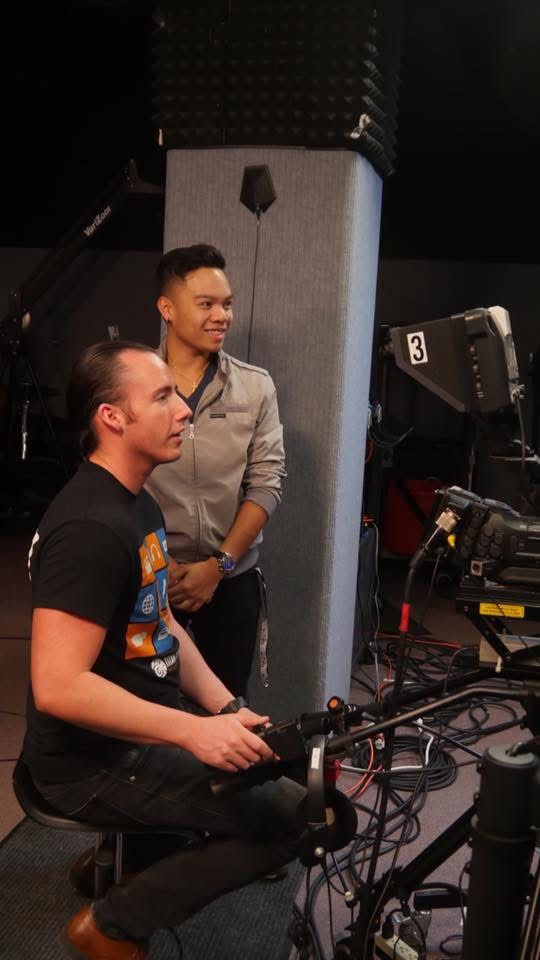
Kemdi:
What does a typical week look like for you, work-wise? Is it more of a consistent 9-to-5 schedule, or does it shift depending on what’s needed?
Javlin:
It’s a 9-to-5.
When I first joined, everything was remote, which was great. But a couple of months in, we switched to a hybrid model. Now we work from home on Mondays and Fridays, and go into the office Tuesday through Thursday.
It’s not too bad.
Throughout the year, the workload fluctuates. They have two big events every year that kind of define our busy seasons. One is in June when they announce all the new software. The other is in September, which we call “launch”, when new phones and other products come out.
During those times, things can get hectic.
There have been days when I’ve started at 9 AM and worked straight until 10 PM—or even through the weekend—just because of the nature of the job. We’re creating commercials, web content, and social media campaigns for these major announcements. So yeah, it gets intense.
But outside of those windows, things are pretty manageable.
It’s a nice, steady 9-to-5, and I feel really lucky to be working on projects that get seen by millions of people around the world. I’m super grateful for that.
It’s been a cool experience, and I’m always happy to share what I’ve learned with others, especially people who are trying to break into this field. Stories like this show that it is possible.
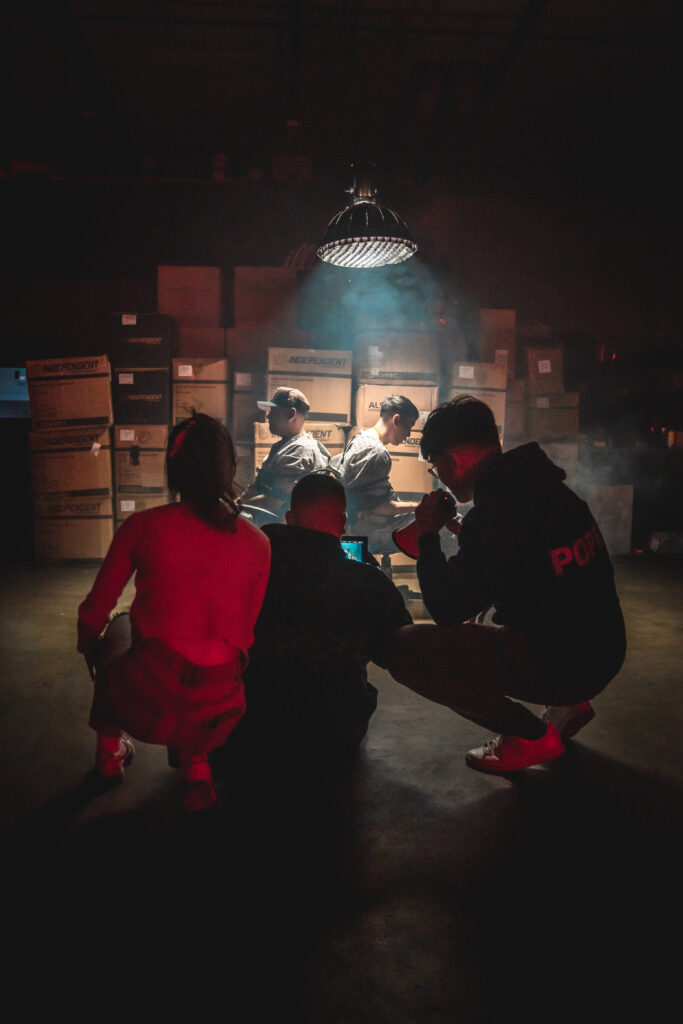
On weekends, I usually chill at home, enjoy the rent I’m paying—because the Bay Area is expensive—and work on music. There’s a production company up here called Burgundy Suite I’m friends with, and whenever they need VFX help, they’ll hit me up.
Other than that, life’s just rolling along.
Kemdi:
First off, I just want to say—you’ve done great for yourself. You’re successful. So I don’t know if this question even has an answer, but… do you have any further goals for yourself?
Javlin:
When I was working with POPeye down in L.A., the plan was always to eventually move up to the Bay, get some experience in the corporate world, save up some money… and then head back to L.A.
One of my dreams has always been to open a studio, kind of like a creative library. A place for video editing, music recording… stuff like that. I’ve always thought that would be cool.
That’s something I’d like to pursue in the future.
Also, I just got engaged this past New Year’s in Paris—so I have to save up for the wedding, and eventually a house. There’s a lot of real-life stuff that’s a priority right now. So most of my savings are going toward that.
But once all that’s figured out, yeah, I’d love to open a studio. Somewhere that can be a creative home for people who want to learn and grow. I think that would be amazing. It’s still a few years away, but it’s a goal I want to work toward.
Kemdi:
First of all, congrats!
When it comes to mentors and mentorship, you mentioned Jeffrey and Nathan from Titan TV. You’ve also worked with CassidyJo, who I consider a mentor now myself.
What would you say is the best piece of advice you’ve received during your career journey?
Javlin:
Oof, that’s a good one. I honestly can’t pinpoint just one thing. I don’t have the best memory cuz work sometimes blurs—I try to take things day by day.
There’s been a lot of great advice shared with me over the years, and in the moment, it always hits hard. I’ve had friends drop some serious gems, I just can’t recall them all right now.
But if I had to share something, it might just be: bet on yourself.
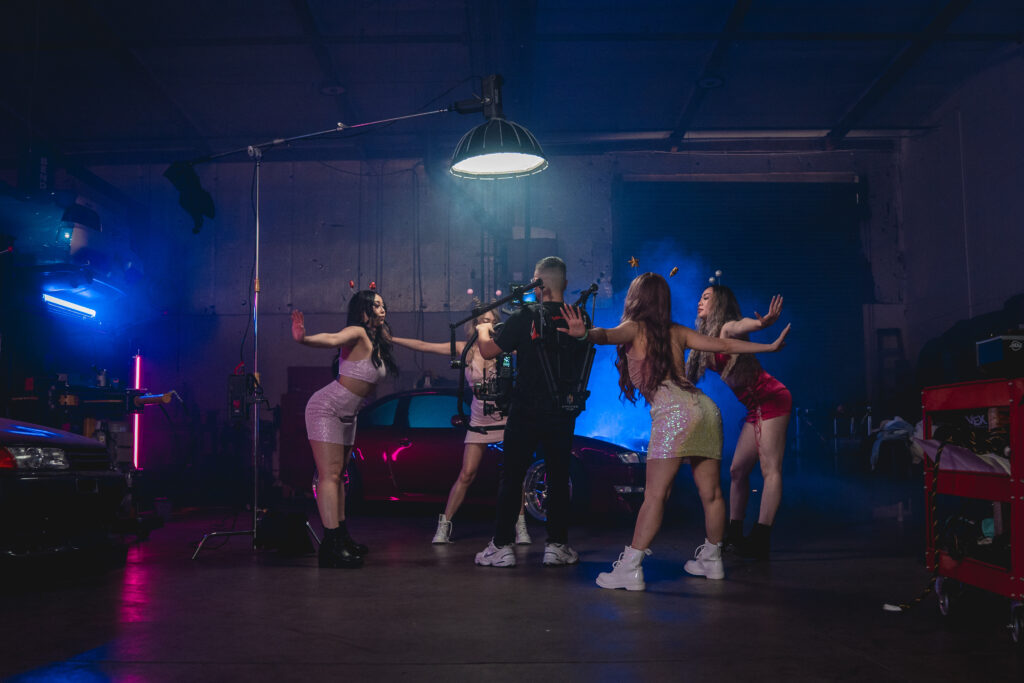
You’re capable of more than you even realize, as long as you put in the work. Make an effort to build connections, and approach everything with genuine intention.
There are so many resources out there. If you don’t know how to do something, YouTube is free.
Even after college, I didn’t have any industry connections. I applied at Warner Bros., Sony, Netflix—you name it. But a lot of those places require a referral, and I didn’t have that.
That’s actually how I even ended up working at the Apple Store—through a past housemate. So yeah, don’t underestimate your friends. They can be some of your most valuable resources. Don’t be afraid to ask for help.
I guess that’s the best advice I can give right now. It’s kind of situational, but yeah—that’s what I’ve got.
Kemdi Nwosu:
Thank you again for agreeing to do this. I thought this was insightful.
Honestly, your story is genuinely inspirational. I loved researching your career, starting from Cal State Fullerton to Titan TV and beyond.
I think people will watch this and realize they don’t need to follow one set path. They can try things out, explore, and find their way.
So yeah—thank you. I appreciate it.
Javelin:
Of course, thank you for having me. Take care.



